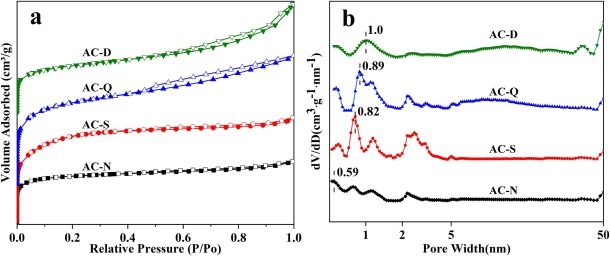Abstract
The performance of ethanol carbonylation for Ni supported on different activated carbons varies considerably. The physicochemical properties of Ni catalysts supported on different activated carbons have been investigated in detail by a series of characterization studies. Catalysts with less oxygen-containing groups and smaller pore size are demonstrated to be more effective for vapor-phase ethanol carbonylation, with higher ethanol conversion and selectivity of propionate and ethyl propionate. However, there is no clear correlation between the carbonylation activity and the initial Ni nanoparticles size of the fresh catalysts due to the re-dispersion of the Ni nanoparticles by the ethane iodide interaction during the reaction. It is also proved that the deactivation of the catalyst may be caused by the loss of the active component Ni and the deposition of oxygen-containing carbon species. In situ diffuse reflectance infrared Fourier transform spectroscopy (in-situ DRIFTS) showed that ethane iodide is essential for the ethanol carbonylation reaction and that carbonylation intermediates (C2H5CO-Ni-I) are formed only in the presence of ethane iodide. The mechanism of the ethanol carbonylation reaction was proposed, showing that the carbonylation of CO insertion and the elimination of ethylene production in the intermediate are competing reactions. This work has implications for the design of highly efficient alcohol carbonylation catalysts.

Keywords Plus:METHANOL CARBONYLATION,SURFACE-CHEMISTRY,CATALYTIC-PROPERTIES,NI/AC CATALYSTS,NICKEL,ADSORPTION,PERFORMANCE,CO,SPECTROSCOPY,CEO2
Published in CHEMICAL ENGINEERING JOURNAL,Volume476,10.1016/j.cej.2023.146595;NOV 15 2023


